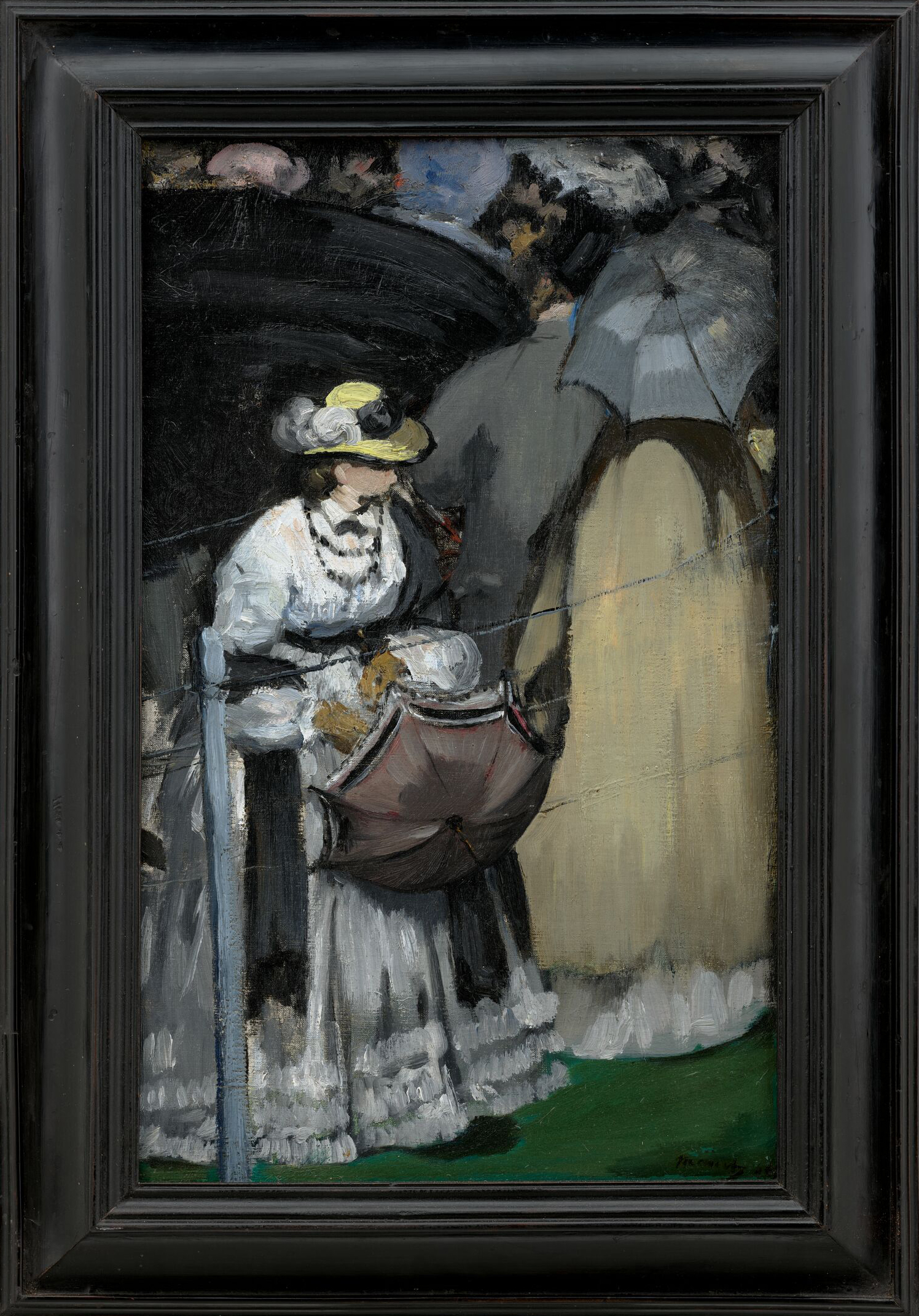Exhibited at the historically significant 1905 Salon d’Automne in Paris, Édouard Manet’s ‘Pelouse du champ de courses à Longchamp’ (1865) belongs to the artist’s rare racecourse pictures, comprised of only six known oil paintings as well as a handful of sketches and watercolors.

1 / 4
Édouard Manet
Pelouse du champ de courses à Longchamp (Public Enclosure at the Longchamp Racecourse)
- 1865
- Oil on canvas
- 39.2 x 24.5 cm / 15 3/8 x 9 5/8po
- Recto, lower right, signed and dated: ‘Manet 1865’
This important painting is a companion to a canvas at the Cincinnati Art Museum. Both works were originally part of a larger composition that Manet divided into three individual works, a technique he often employed to intensify the focus on his subjects. The third section, which likely depicted the exhilarating rush of horses thundering towards the viewer, is no longer extant.
In this painting, Manet brilliantly captures the public spectacle of 19th Century French horse racing. A woman of elevated status, distinguished by her stylish hat and accessories, leans across the barrier, gazing at either the equestrian scene or the social milieu unfolding around her.
‘You must be of your time and paint what you see.’ [1]
Édouard Manet
The surface of this painting is striking, with Manet’s loose, broad brushstrokes evoking both movement and the play of dappled sunlight on the woman’s dress. His use of black, in contrast to the emerging Impressionist palette, underscores the influence of Spanish masters like Diego Velázquez and Francisco Goya.

Edgar Degas, Édouard Manet aux courses (Édouard Manet at the Races), c. 1868–1869. Courtesy The Metropolitan Museum of Art, New York NY
This modern subject reflects the sweeping changes in Paris during Manet’s time. At this time, French horse racing was elevated to a grand public spectacle particularly after the 1857 inauguration of the Hippodrome de Longchamp in the Bois de Boulogne on the western edge of Paris. The races also inspired other artists like Edgar Degas, who not only painted them but also accompanied Manet, sketching him among the crowd.

Édouard Manet
By 1865, Manet had secured his reputation as a leading figure in the Parisian art world. His breakthrough came with the critically acclaimed ‘The Spanish Singer’ (1860) at the 1861 Paris Salon, while the provocative 1865 exhibition of ‘Olympia’ (1863) further cemented his prominence—the same year he completed the present painting.

Icons
Discover extraordinary masterpieces from celebrated modern masters and leading contemporary artists coming to market.

Frieze Masters
We return to Frieze Masters with a selection of historic works by celebrated 19th- and 20th-century artists from the gallery’s roster and beyond.
[1] Édouard Manet quoted in Antonin Proust, ‘Edouard Manet. Souvenirs,’ Paris/FR: Barthélemy, 1913
Édouard Manet, Champs de courses (Women at the Races) [detail], 1866. Fanny Bryce Lehmer Endowment, 1944.105. Courtesy the Cincinnati Art Museum
Portrait: Édouard Manet, c. 1867. Photo: Félix Nadar



